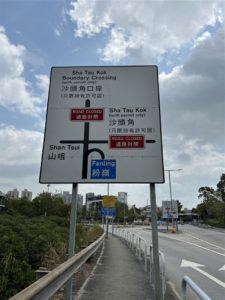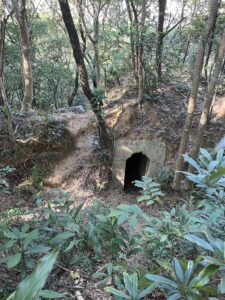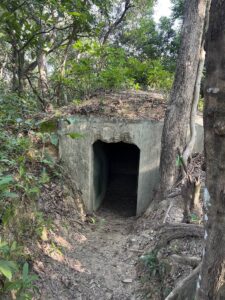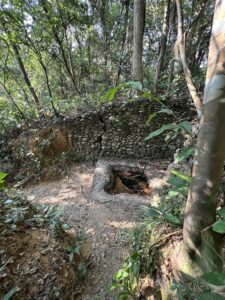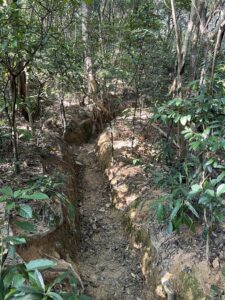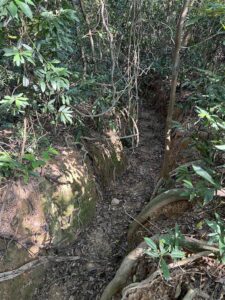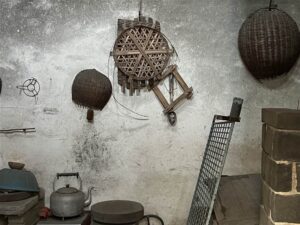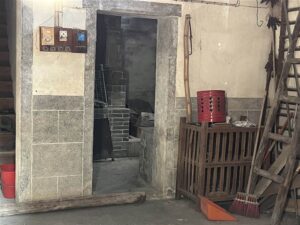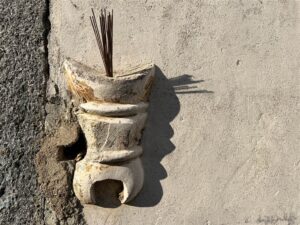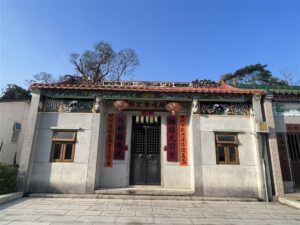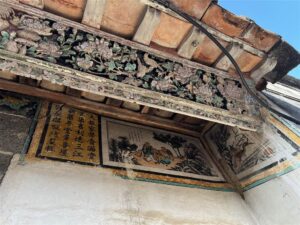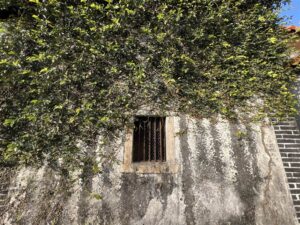Beautiful Sha Tau Kok – A Tour of WWII Sites
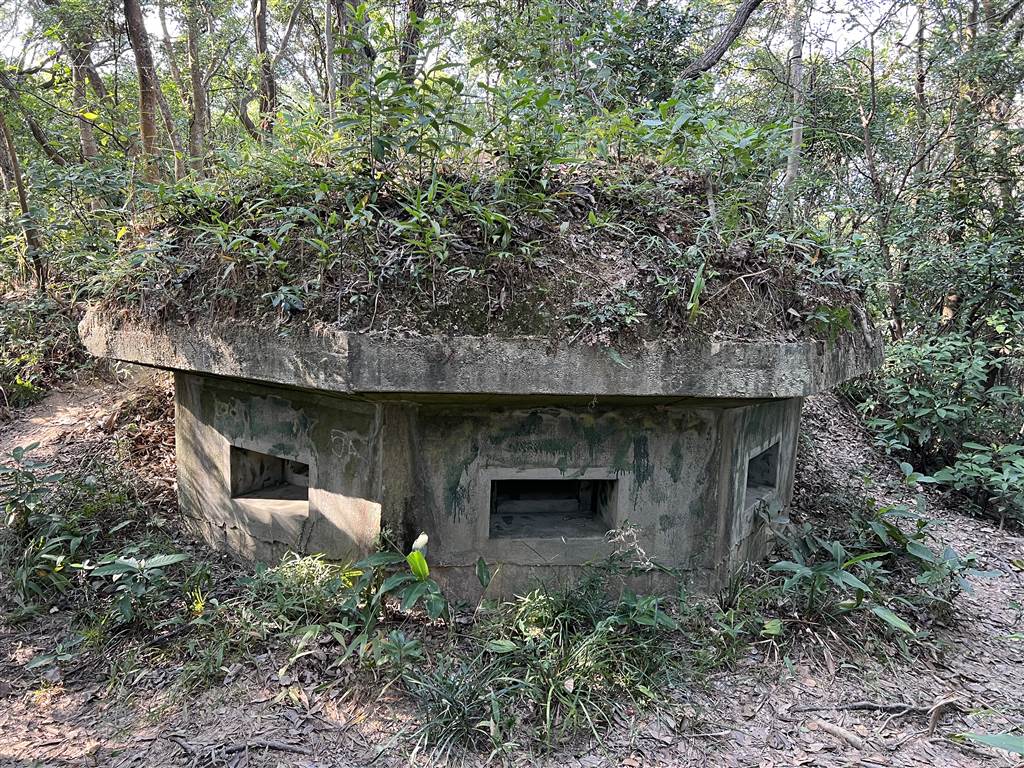
I have always wanted to visit the war sites of Sha Tau Kok, but despite my best effort I was not able to locate them. I finally found a guided tour organized by the Stonehouse Family Garden. This tour would take me to these sites with explanations and stories of their significance. Including our wonderful guide, there were a total of six of us for this walk in Sha Tau Kok.
From Fanling MTR Station we took Bus Route 78K to Sha Tau Kok and got off at the second-last stop, just before the restricted frontier area, at the Tam Shui Hang stop.
Photos: left – you will see this big sign when you get off the Tam Shui Hang stop. Keep going on that road, and you will arrive at Shan Tsui Road. Keep on going on Shan Tsui Road until you see this opening on your left (Photo right). Then head up the trail to the mountains.
The WWII Sites of Sha Tau Kok
The war sites are located along the path at the foothill. This path leads up to the Pak Kung Au direction, and if you keep on hiking you will be able to find the MacIntosh Cathedral of Pak Kung Au. I have passed by it previously but did not know that the war sites were right there. When you see this structure on the side of the path, this is indication that you are close to the war sites.

Go behind these structures and you will find more miltiary installations.
This is believed to be the well where the Japanese soldiers took their baths. The rounded rocks on the side are supposedly where they rubbed their backs. It seemed to me that they have installed a much-needed facility with comfort in mind.
More pillboxes are in this area, plus the trench that goes around the different structures. These trenches are not as deep because Japanese soldiers were not so tall.
An interesting point to note here regarding the construction of these sites. The guide told us that the villagers said that they had a decent relationship with the Japanese soldiers during this time. Not only was there no forced labor for constructing these sites, but also they were actually paid to build them.
After the war, these structures were left without serving their intended purposes. The villagers said that in the following years, the smugglers took over these structures as storage for their goods, as this boundary area is a hotspot for smuggling.
Tam Shui Hang Village
We then headed over to the Tam Shui Hang Village for a walk. The villagers used to allow this tour to visit their houses, but because they have rented them out this time, we were not able to enter.

These row houses are connected on the inside. Each family of a son would occupy one house within the row. They are connected because this would allow the whole family to defend against the bandits that ran rampant in the area during the old days.
Similarly, the small windows are intended to serve defensive purposes. Keeping the windows small will enable the dwellers to see the situation outside the house, but keeping vulnerability to attacks to the smallest.

Finally, there was one very colorful house that really stood out amidst the typical village dwellings. We were told that the owner of the house returned from abroad and restored this house to its colorful appearance now. The owner was supposedly influenced by Tibetan Buddhism.
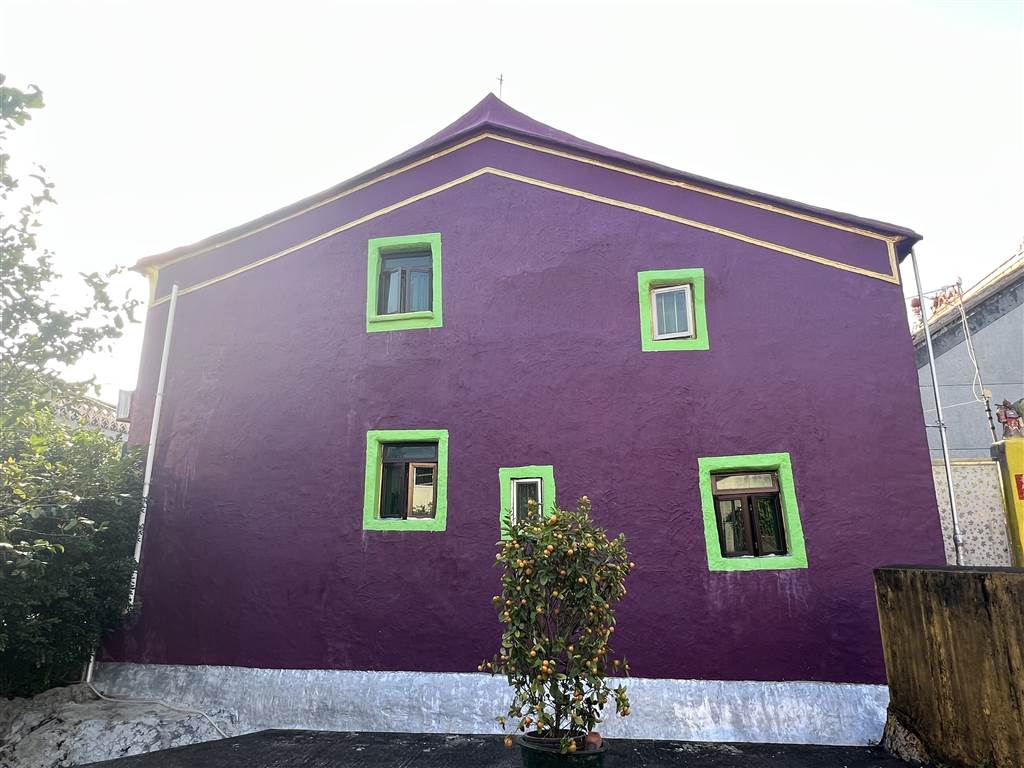
To participate in the tours organized by the Stonehouse Family Garden, please visit here.
How to Get There
Bus Route 78K, green top minibus Route 55K both go to Sha Tau Kok from the Sheung Shui MTR Station.

